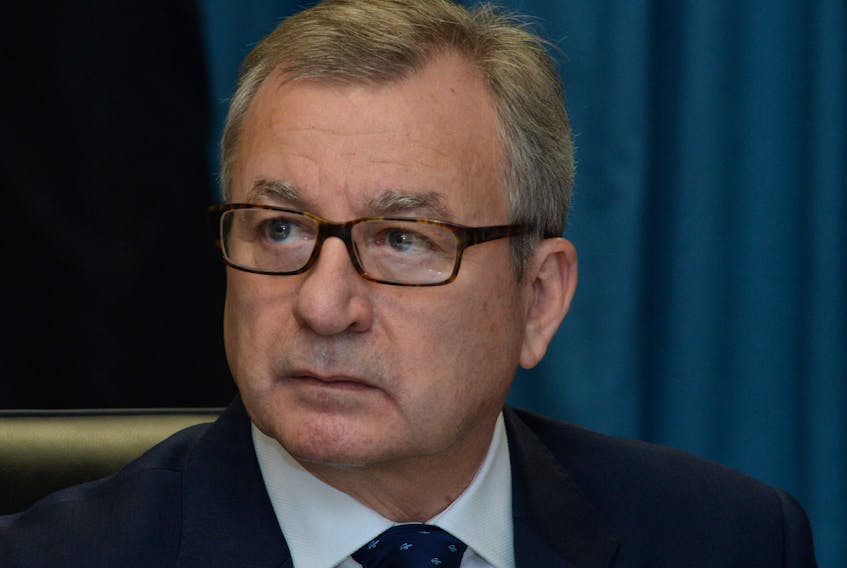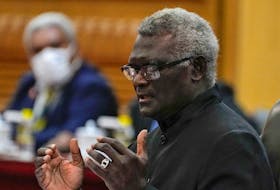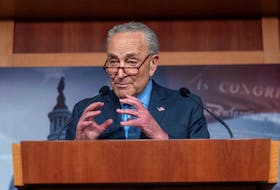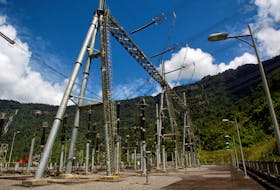Muskrat Falls project director Paul Harrington said he understands there can be optimism bias on construction megaprojects like the Muskrat Falls hydroelectric project, but denies Nalcor Energy’s project team fell victim to it.
“I think just like optimism bias is a human condition that’s almost irresistible in some cases, we’ve got the other bias as well, which is hindsight bias. And hindsight bias is again, I believe, it’s so easy to fall into that trap. Hindsight bias is also called ‘I-knew-it-all-along syndrome,’” he said Monday on the stand at the Muskrat Falls Inquiry.
Harrington was asked at that point about tactical risk calculated for the megaproject’s budget. Outside of that, there were “strategic risks” for the project that were — by their very nature — difficult to quantify, he said, while being asked if he properly communicated them to project leaders such as Gilbert Bennett and Nalcor Energy president and CEO Ed Martin.
Strategic risks cover potentially unforeseen risks to the project, being outside of what could reasonably be included in the estimate at the point of sanctioning, at the end of 2012. In terms of budgeting for strategic risks, budgeting for “black swans,” Harrington said you attempt an estimate and try to ward against large overruns, but you also don’t know what you don’t know.
He raised the phrase “strategic opportunities,” describing things like the federal loan guarantee —savings to the project budget, potentially offsetting whatever you might expect to hit your project’s bottom line from any strategic risks-turned-reality. The full picture — pairing opportunities and risks — was known only to the project executive, he suggested.
For the Muskrat Falls project, Westney Consulting offered an assessment of about $500 million in strategic risk (being a mean from a range of estimates). It was not included in the public, capital cost and the calculations of power options.
Richard Westney testified Friday that a partner with him in Westney Consulting, Keith Dodson, had advised Nalcor Energy to consider setting aside funds to cover an even higher level of “strategic risk” on the Muskrat Falls project, using a probability factor of P75 or even higher for a management reserve, a higher reserve fund, as opposed to P50.
“I can’t recollect him ever giving me that type of explicit instruction or recommendation,” Harrington said in response to that testimony.
“If they really, firmly believed that, then why didn’t they put that in their report?” he said.
The report offered a range of amounts on risk exposure from P25 to P75.
Inquiry co-counsel Kate O’Brien went back and forth with Harrington on several questions, as Harrington sought clarifications to what she described as simple “yes or no” questions.
In one instance, O’Brien asked repeatedly if he believed consideration should have been given to strategic risk and setting aside funds as advised by Westney Consulting.
Harrington said his role involved identifying risk, but not making the decisions on what actually would be budgeted and shared.
He also said risks generally identified (in schedule and labour availability, for example) were at the very least mitigated.
Auditors with Grant Thornton told the inquiry the strategic risk exposure identified by Westney Consulting was not included in the project’s capital cost estimate that went into the analysis of an “isolated island” versus Muskrat Falls project comparison of power options.
And cost overruns on the project were expected to be covered by the province. His understanding was the province acknowledged a need for $300 million to $600 million set aside for unexpected costs.
The Muskrat Falls project was Harrington’s first work on a hydroelectric power megaproject, although he had a history with oil and gas megaprojects, including projects offshore Newfoundland and Labrador. He testified the Muskrat Falls project would have been the first project where he was in a position to be part of assessing strategic risks.
In addition to the continuing Q&A, Harrington has applied to keep his rate of pay and overall project compensation confidential. That matter is expected to be dealt with by the commissioner after his initial questioning at the inquiry.
RELATED STORIES:
The Muskrat Falls Inquiry
Muskrat Falls project review was limited: risk expert








